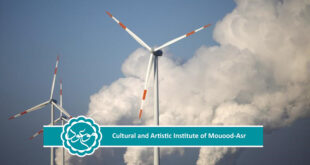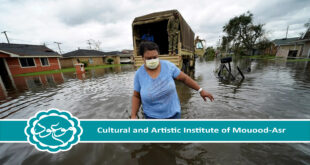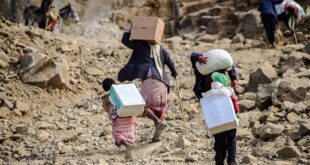The consequences of climate change for human security are profound, but much of the last decade has been lost in avoiding those consequences. The implications for human security are serious. Today, with the consequences of climate change being increasingly recognised by military analysts, there is a risk of the “securitising” of the climate change agenda leading simply to military responses rather than a more preventative course of a rapid shift to a low-carbon society.
A World Blowing Cold and Hot
In 2009-10, the United Kingdom and much of the rest of north-west Europe experienced one of the coldest and most prolonged winters for several decades. In the minds of many people this seemed to confirm the view that the evidence for global warming was limited at best, and that the views of climate change sceptics were to be taken seriously. Furthermore, the winter’s experience came after the Copenhagen climate negotiations made little progress, and was also in the aftermath of a major controversy concerning climate change research at the University of East Anglia in the UK.
In this context- of suspicion over the reality of climate change – many people in Western Europe found it difficult to believe that the month of January 2010 was actually one of the warmest on record. This was the case when expressed in global rather than European terms – while the north-east Atlantic had been experiencing severe cold, parts of North America had warmer than average winters, and temperatures were high in many other parts of the world.
As 2010 progressed, two other weather events and one oceanic development added further to a sense of uncertainty. For much of the mid-summer period, Russia experienced exceptionally high temperatures which, in the case of the greater Moscow region, resulted in numerous forest fires leading to smog over the city. At the same time, further south in Central Europe, there was widespread flooding across 8 countries. In addition to this, there were appalling floods in Pakistan as the monsoon season was marked by some of the heaviest rainfall in decades. The full scale of the losses in Pakistan is still not clear.
Few climate scientists sought to claim that these weather events were direct indicators of climate change, but an indirect connection was certainly suggested. While it may be a common mistake to confuse “short-term weather” with “long-term climate”, it has been widely predicted that as the atmosphere of the entire planet slowly heats up, then weather systems should be expected to become more energetic, leading to extremes of weather events such as intense tropical storms, exceptional monsoons or continental heat waves. The experiences in Russia and Pakistan could be no more than equivalent to some of the extreme events that have been witnessed in the past, but their conjuncture at least reminded many people of other aspects of climate change.
The final element for 2010 was not a weather event as such, but a report that the Artic Ocean was experiencing one of the most substantial losses of mid-year sea ice on record. What seemed particularly surprising was that this should be happening within a matter of months of such a severe winter in the north-east Atlantic. In fact, the loss of sea ice was within the predictions that climate change models have produced in recent years. The overall impact of the loss of sea ice and the extreme weather experienced in Russia and Pakistan meant that by early September there was a widespread sense, once again, that climate change should be taken seriously.
Climate Change in Context
The possible impact of increased carbon dioxide levels in the atmosphere was well recognised over 40 years ago, and by the end of the 1980s there was serious concern that there would be substantial changes in the planet’s climate if carbon emissions were not curbed. Although not directly related to climate change, the potential destruction of the ozone layer through the release of CFC pollutants was recognised in the mid-1980s as being the first clear example of human activity having an impact on the entire global ecosystem. The ozone problem was relatively easy to counter, since CFCs could be replaced, and phasing them out through the Montreal Convention was agreed in 1987. Partly because of the sudden and serious nature of the CFC issue, climate change research was attracting far more attention by 1990.
At the same time, there was one aspect that limited the extent of the concern. This was that studies of natural climate change in prehistoric times have indicated that most of the impact was in the north and south temperate latitudes. If this was repeated with human-induced climate change then at least the countries most likely to be affected would be wealthy enough to be able to adapt. With the tropics and sub-tropics buffered against excessive impacts, poorer people across the world might have less to contend with.
By the early 1990s, advances in climate change science showed that the pattern of natural climate change would not be repeated by human-induced change, and that those parts of the world least able to cope would be seriously affected. By the early part of the 2000s, further work was actually showing that there would be an asymmetric impact. In broad terms, large parts of Antarctica, the southern oceans and the southernmost parts of the continental land masses would experience the smallest increases in temperature, whereas the Arctic region and most northern, sub-tropical and tropical land masses would experience above-average increases. There were also indications that rainfall would tend to increase over the oceans and Polar Regions but decrease over the tropical and sub-tropical land masses.
 Mouood Mouood English Edition
Mouood Mouood English Edition




